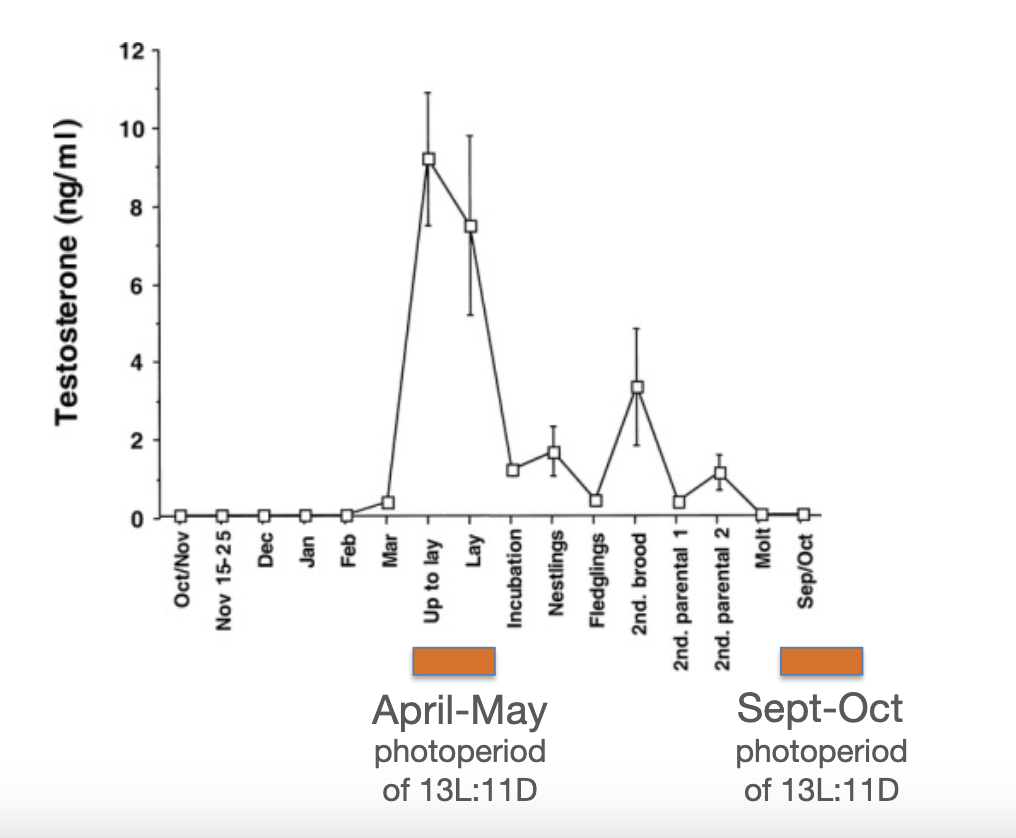Environmental Influences on Physiology: Reproduction
1/18
There's no tags or description
Looks like no tags are added yet.
Name | Mastery | Learn | Test | Matching | Spaced |
|---|
No study sessions yet.
19 Terms
examples of how the environment affects physiological processes
effects of stress on reproductive physiology (social groups with dominance hierarchies)
anthropogenic compounds (ex: pesticides, industrial waste chemicals) as endocrine disruptors
when do species reproduce?
breeding is timed so that offspring emerge when food is abundant to support offspring growth and development
how do species know when food will be available (to plan reproduction)
environmental cues
examples of environmental cues
photoperiod
temperature
salinity
rainfall
availability of suitable breeding sites
social factors
food availability
which environmental cue is a “primary cue” (leaving the others as “secondary cues”)
photoperiod, turning the organism from non-breeding to breeding
why is photoperiod a primary cue?
it is a reliable indicator (less fluctuations, plants that provide food use this indicator)
what happens during the breeding season?
heightened sexual and aggressive behaviours, enlarged reproductive organs

what is the environmental cue that leads to an increase in testosterone levels in the spring?
increasing day length past a threshold of day length, as well as secondary cues like temperature or rainfall
why is a threshold of day length necessary for the beginning of the breeding season?
so that breeding does not start in december (when there is no food available)
how is photoperiodic information in birds transduced into a biological signal?
the pineal gland in the avian brain is at the top of the brain and can detect light. This gland controls the release of melatonin
where is melatonin synthesized and when?
it is synthesized in the pineal gland in response to darkness (less melatonin during longer days)
what is the biological signal that initiates reproductive changes in a species that starts to breed in the spring?
decreases in melatonin beneath a certain threshold
how does melatonin affect GnRH-synthesizing neurons in the hypothalamus?
it inhibits the GnRH release/responsiveness. Binding of melatonin to melatonin receptors in the hypothalamus decreases GnRH synthesis. It can also decrease the amount of GnRH receptors.
if red deer breed in november and it takes one month for breeding to occur, what is the primary environmental cue that triggers changes for reproduction?
day lengths being shorter than night lengths and decreasing day lengths
in red deer, how is the photoperiod cue transduced into a biological signal?
melatonin is synthesized at night, therefore melatonin levels increase with increasing night length
in red deer, what is the mechanism that the biological signal affects testosterone secretion in male deer?
increases in melatonin levels lead to increases in GnRH release in the hypothalamus, leading to increases in LH (and FSH) secretion from the anterior pituitary gland, which stimulates testosterone synthesis and release in Leydig cells in the testes.
what is the problem with climate change on species that rely on temperature for emergence?
increasing temperature is making the dates of peak emergence earlier and earlier
trophic mismatches
organisms that are food for other animals often rely on temperature, which can change with climate change. Photoperiod is unaffected by climate change, meaning that the animals that rely on photoperiod as a cue for reproduction do not have as much available food due to the earlier and earlier emergences of species that rely on temperature
how can animals adapt to climate change?
they can change their threshold for photoperiod, change receptiveness to melatonin, rely more on other cues, etc.